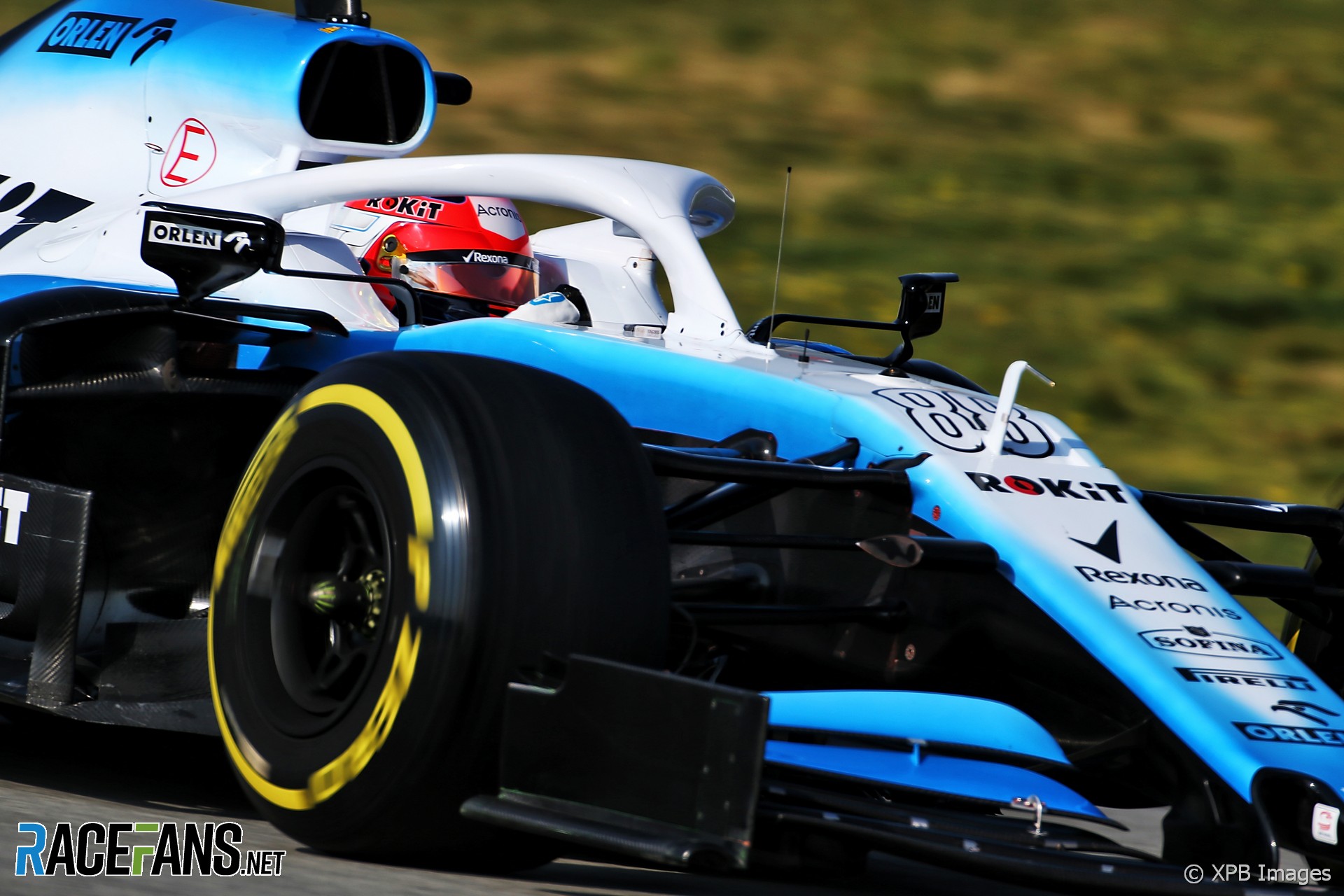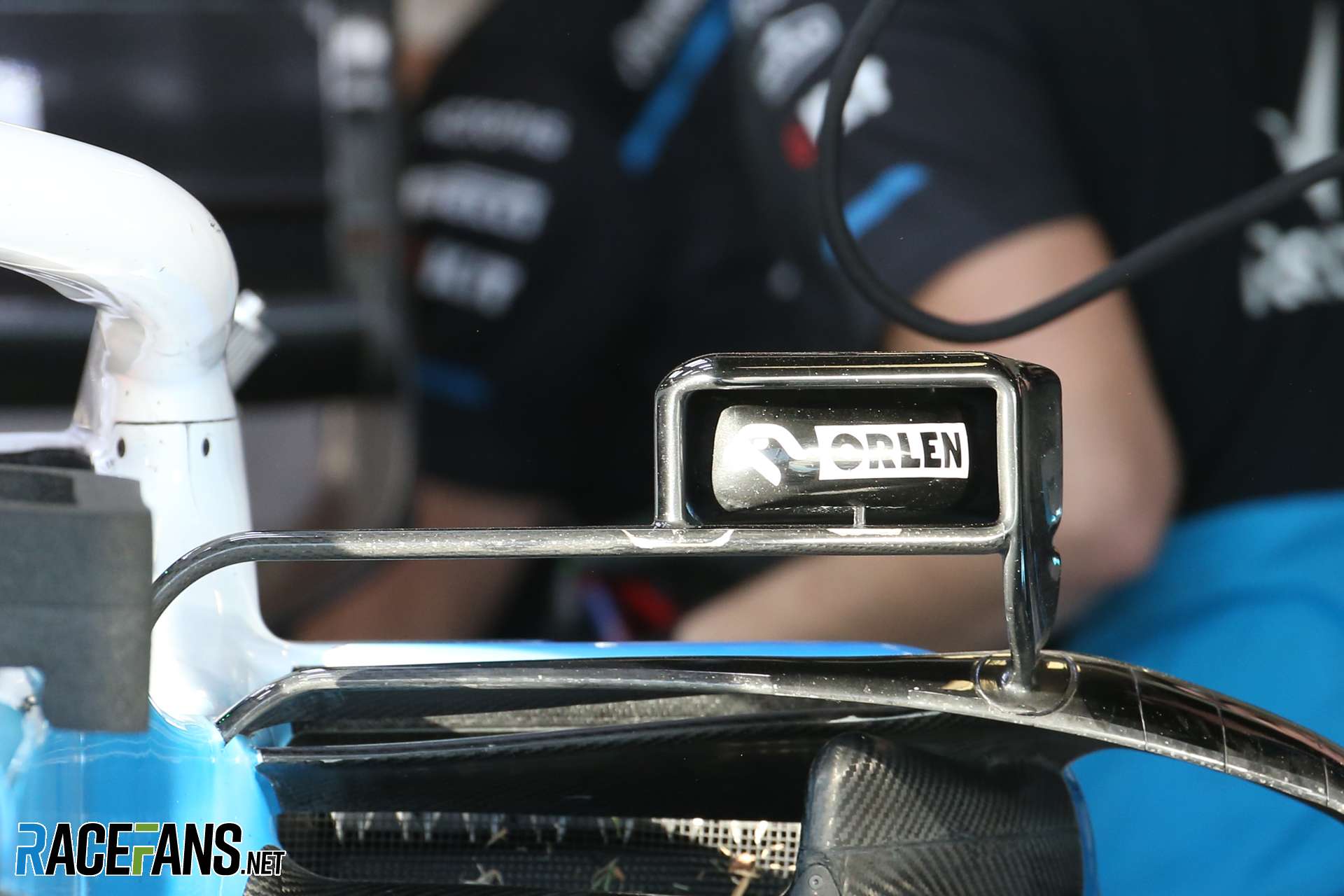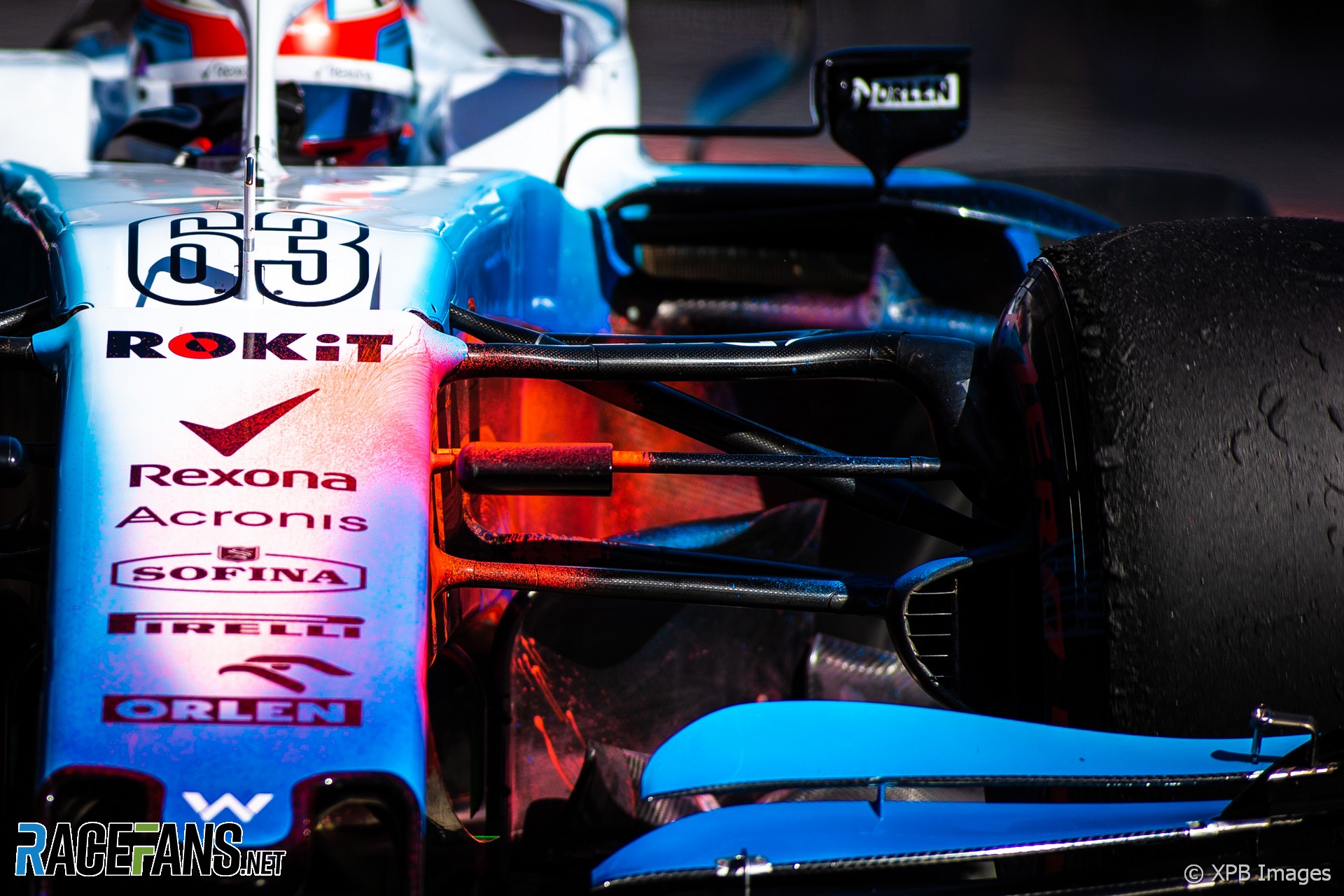The first practice sessions of the 2019 F1 seadson did not go well for Williams. The FW42s propped up the times sheets, lagging well over a second and a half of the next-slowest of their rivals.
The team rolled up with two key technical changes when the cars were presented at the FIA garage for scrutineering. Through pre-season testing two aspects of the Williams legality were called into question: rival teams queried details on the FW42’s mirrors and front suspension. Both these designs have been changed for more conventional solutions ahead of the Australian Grand Prix.Despite the various crises going on behind the scenes at Williams in the past year, the design of the 2019 FW42 was no less aggressive than its predecessor. Two key aspects of the car took some very liberal interpretations to the wording of the technical regulations and came under scrutiny regarding their legality.

Firstly, the rear-view mirrors, the mirrors and their mountings have been an area of increasing complexity and exploitation in F1 in recent years. Several new regulations have been applied to the mirror set up were applied for 2019, which tightly defined the size and position of the mirror pod (the part that mounts the mirror itself) and restricting it to two mountings.
Williams’ initial design reshaped the mirror pod into a vane-shaped design, by taking advantage of the angled mirror surface, required to give the driver a clear rear view because of the wider mounting position. It was queried that the reshaped mirror pod and the mounting that its merged into formed a vane and this was beyond the intention of the revised rules.

In Melbourne, the mirror set up has been revised to a more typical F1 2019 set up, the mirror pod using the Ferrari 2018-style ducted design and mounted with two far simpler mountings. This is expected to meet the FIA scrutineer’s approval and should end any debate about this part’s legality.
Advert | Become a RaceFans supporter and

[mpuzweeler01]Secondly, the FW42 appeared in testing with an extra leg to its lower front wishbone. This thinner carbon fibre leg trailed behind and below the lower wishbone. In this position the extra part would have a useful aerodynamic effect, creating downwash towards the bargeboards and sidepod fronts, but would also at first appear to be in contravention of the prevailing rules for suspension members.
The rules allow for just six members to support the wheel, two for each wishbone and one each for the pushrod and track rod. Each of these members needs to be symmetrical and restricted in angle relative to the floor, in order to reduce any beneficial aerodynamic effect. Williams’ seventh member would appear to be an interpretation of the rule that excludes suspension members carrying brake lines, tethers or wiring being exempt from the aforesaid geometrical rules.
With such a broad interpretation of the long-established rules, again Williams chose to remove the seventh member and presumably route anything inside that part through the main wishbone cross section. In this format there should be no question of the car’s legality.
Advert | Become a RaceFans supporter and
F1 technology
- Pictures: Alpine’s new front wing and more Suzuka updates
- Pictures: Red Bull bring first performance upgrade for RB20
- How teams have tweaked their cars to hit higher speeds in Jeddah
- ‘A horrible project’: Why duplicating Red Bull’s trend-setting suspension is so difficult
- Aston Martin, Mercedes, Haas and others describe extensive US GP updates




falken (@falken)
15th March 2019, 13:04
Is that what you fire someone for?
Barry Miller (@bmk1586)
15th March 2019, 13:24
Especially when you brag and say you deserve an award for the mirror design! LMAO! Foot in Mouth!
Renee (@renee)
15th March 2019, 19:59
Who said that?
GongTong (@gongtong)
15th March 2019, 13:12
To be fair, they probably weren’t deemed effective.
I mean, it’s not like disqualification is going to cost us very much by the look of things.
Electroball76
15th March 2019, 13:49
It just shows that you can have a class-leading engine, talented staff, years of experience and yet still lose a second every mile next to a very similar car from Mercedes.
Paul F (@)
15th March 2019, 14:06
I doubt either of these would bring them into competition with anyone else. It’s hard to believe they’re worth a nearly 2 second gain.
ColdFly (@)
15th March 2019, 14:41
great article – thanks.
DaveW (@dmw)
15th March 2019, 14:47
At least they are trying.
Stephen Crowsen (@drycrust)
15th March 2019, 19:28
The problem is it cost time and money to get the car passed scrutineering.
Phylyp (@phylyp)
15th March 2019, 17:17
The hits just keep coming.
Dom (@3dom)
15th March 2019, 17:26
Great article. Thanks @scarbs. Do you still do your famous diagrams @scarbs? I remember you saying that they’re very time-consuming but they do make it easier to follow how things work.
Can I also ask, do you have any opinions as to why Williams seem to be so far off the pace despite their car still looking seemingly complex? Do you still think they have something fundamentally wrong with their aero?
rpaco
15th March 2019, 18:44
A bit unfair on Williams, since only the letter of the regs exists, there is no spirit of the regs or intent unless specifically spelt out.
As I have often pointed out, much of “the regs” is written the wrong way round, and could have been written so as to “exclude an effect” rather than detailing and banning all the currently known methods of achieving that effect. It would then leave the onus on the team to satisfy the scrutineers that such an effect was not achieved or induced. Here again it would be for the team to devise convincing test methods, which may then be adopted by the FIA as standard proofs if they so agree.
It was several years before the the front wing and floor tests were upgraded sufficiently to eliminate Red Bull’s masterly use of non linear bending thingies.
(Though in my opinion it was a pity that the mass damper was banned as it was a truly wonderful device.)
I look forward to the changes the larger wheels and low profile tyres will bring, new suspension designs opportunities, different centre of roll etc Perhaps real suspension travel once again!
BlackJackFan
16th March 2019, 10:44
Hi Scarbs… Many thanks for your articles. Just one point, especially with regard to the Williams mirrors: it would be more interesting, and even more valuable to have side-by-side photos of the original and new mirror/mounting to see just how it changed.